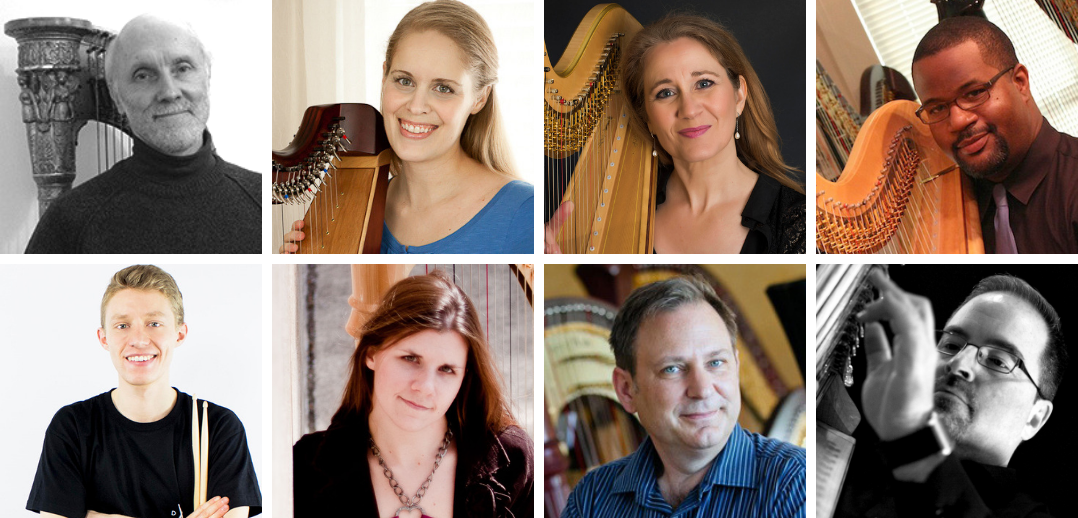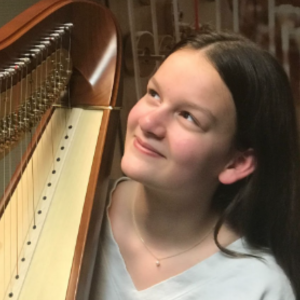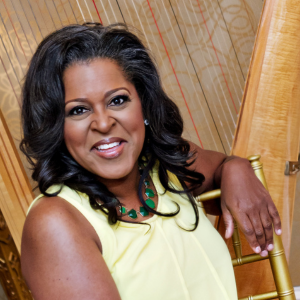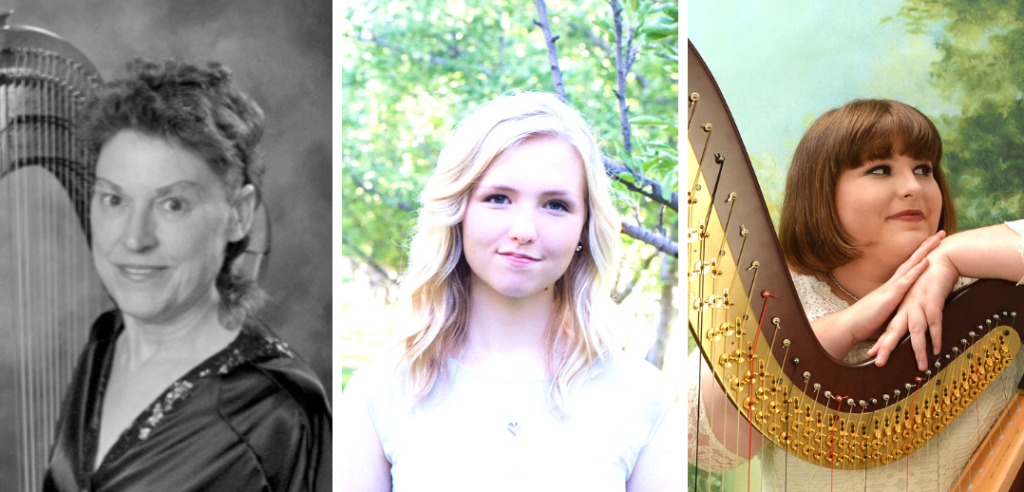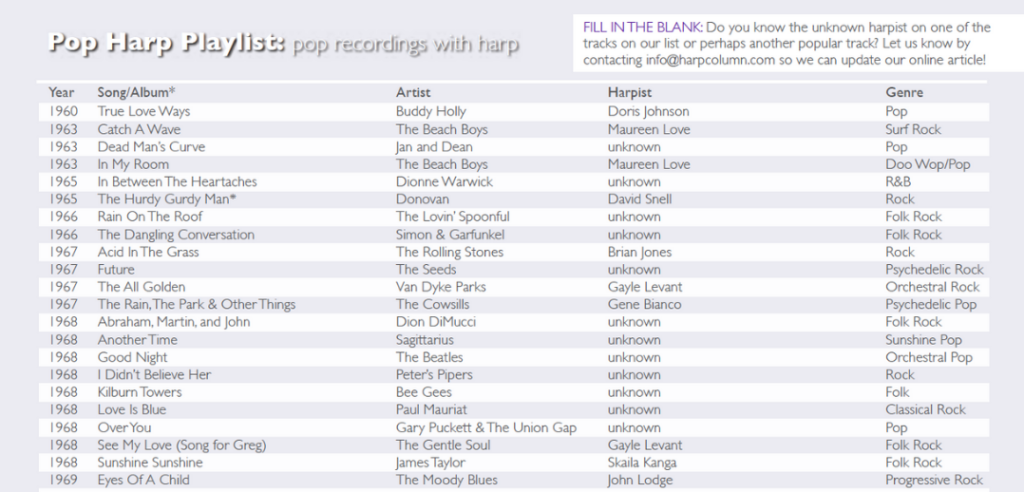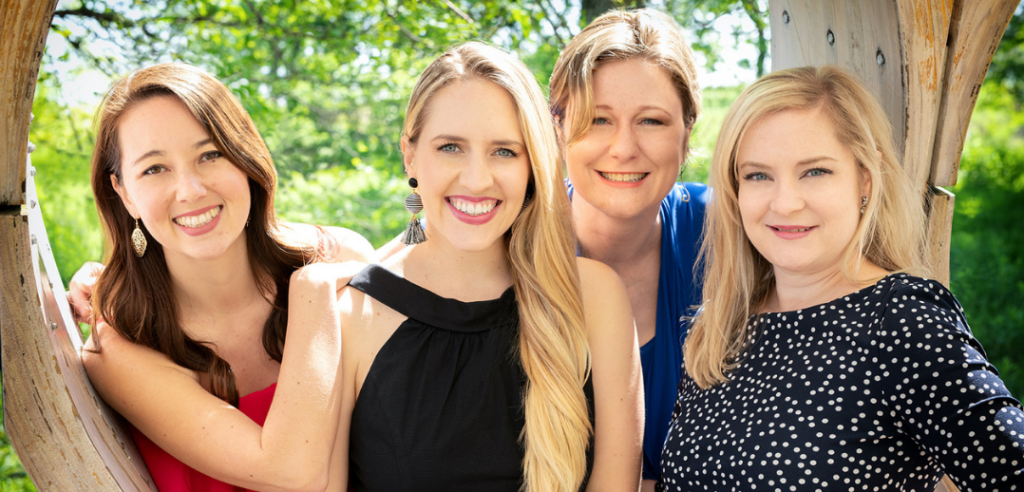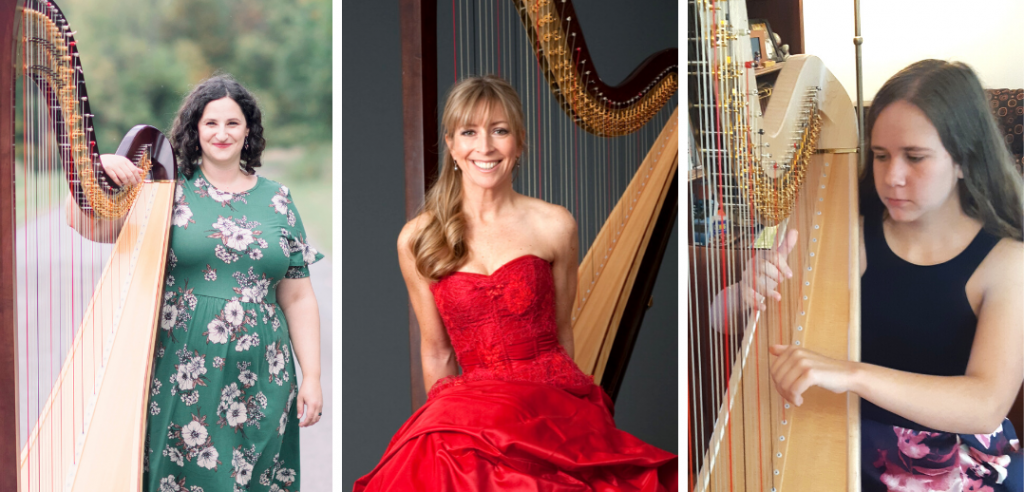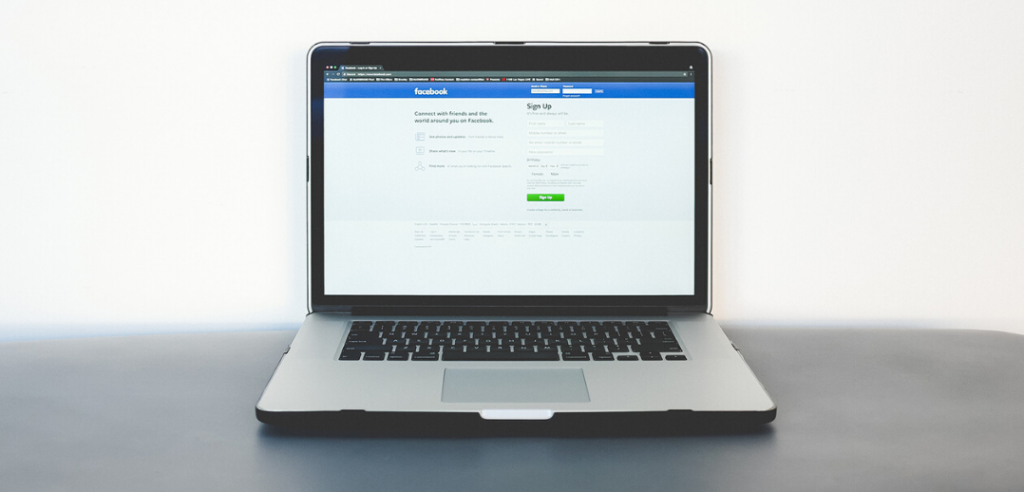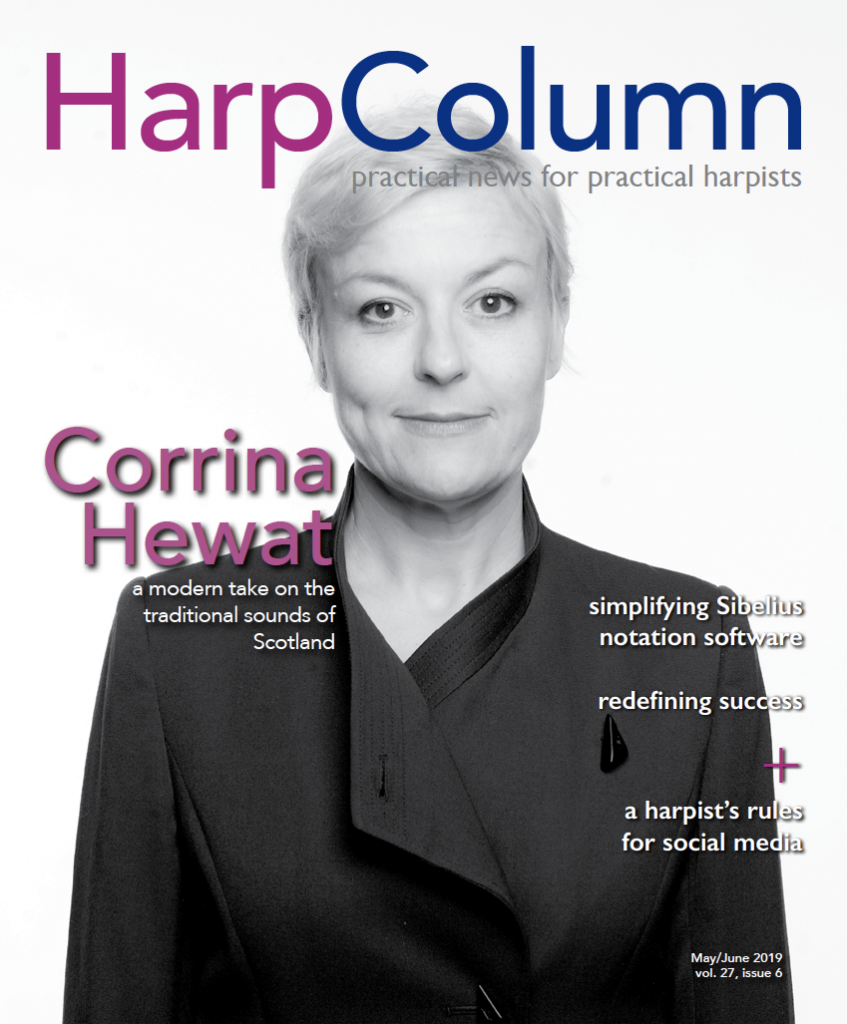Ed.—this article extra is part of the feature article Simplifying Sibelius in the May-June 2019 issue of Harp Column.
“I started typesetting back in 1999 with an early version of Finale. I switched to Sibelius soon after and never looked back. I’ve been using Sibelius for nearly 20 years now.”
Hot tip: “Sibelius will do pretty well anything you want it to, but you might need to explore its hidden depths. Go into every menu and experiment with the options, and don’t ever let yourself be defeated—there will almost certainly be a way to present your score in the way you imagined it.”
Published works: 57 titles with more on the way
On deck: Several new books for young beginners to help learn to read music, play by ear, and understand simple harmony
—Stephen Dunstone, Oxford, England
“I’ve been using MuseScore and love it. The full version is completely free, and it is more user-friendly than others I’ve tried. It seems more intuitive to me and I can easily and quickly get notes down. I’ve always been able to easily do everything I want to do with my music in MuseScore.
Hot tip: MuseScore can do a whole lot more than what is found at first glance and it has a large database of tips and tricks online.
Published works: Two original pieces, 35 arrangements
On deck: The popular piano piece “River Flows in You” by Yiruma arranged for intermediate harp solo
—Jodi Ann Tolman, Papillion, Nebraska
“I started using Finale in 2006. I went to sessions to learn how to use it, and it helped me a lot because it’s a bit complicated to use. I have a notebook where I write every tricky thing.”
Hot tip: “You can do everything you want with this program. You just need to take time to get into it.”
Published works: A method book, an exercise book, a collection of pieces, two solos, and four duets
On deck: Arrangements of a series of French folk music of Languedoc for harp and C instrument
—Isabelle Frouvelle, Washington DC.
“Finale is my preferred choice for music notation software primarily because of my familiarity with the product—I’ve been using it since high school. I have yet to explore Sibelius despite the glowing reviews of the software from my friends who are former Finale users.”
Hot tip: “What appears as playable on Finale may not be playable in reality. I have made it a practice to edit my scores for ‘playability’ from both a visual and technical aspect.”
Published works: Over 40 original compositions and arrangements self-published under DtM Publications
On deck: A new work for treble voices and harp entitled A Ceremony of Spirituals, modeled after Britten’s A Ceremony of Carols.
—Maurice Draughn, Detroit, Michigan
“I use Sibelius, as it’s currently the most powerful and practical software for music typesetting. It is also the industry standard, which is important for my work in education, music publishing, and when collaborating with other musicians. However, Dorico will likely takeover Sibelius in the music publishing world due to its integrated desktop publishing-style features.”
Hot tip: Create a house style/template to save you setting up a new score each time you open up your typesetting software—this will save you time and also make your music look more consistent.
Published works: About 10 books for harp and drum kit, plus numerous digital downloads
On deck: Just finished Amanda Whiting’s An Introduction to Jazz Harp for the Beginner Classical Harpist
—Tony Robinson, Shrewsbury, U.K.
“I use Finale exclusively. It was the first notation software I learned back in 1998, and while I have put a good amount of time in to getting familiar with Sibelius and other programs (to see what the hubbub was all about), I always come back to Finale.”
Hot tip: “Learn the keyboard shortcuts! There are keyboard inputs for just about everything you could ever need to do in Finale and once you learn those, inputting music is practically like typing a story. Once I learned the shortcuts and stopped having to use the mouse for everything, I was able to start finishing projects in a fraction of the time it took with a mouse.”
Typeset works: Close to 100 works as a hired typesetter for composers and arrangers including Susann McDonald, Linda Wood-Rollo, Elzbieta Szmyt, Laura Sherman, Susan Jolles, and hundreds of arrangements and transcriptions of my own for personal use and enjoyment, as well as arrangements I’ve created for students
—Maggie Lovell, Cumming, Georgia
“I switched to Sibelius about 10 years ago because my version of Finale needed to be updated and the buzz was that Sibelius was great.”
Hot tip: “Don’t rely on Sibelius’ playback and sampling to confirm your assumption that what you’ve written for the harp will actually work.”
Published works: five published works for harp solo and ensemble
On deck: A Hungarian Fantasy featuring Liszt, Fibich, and Brahms, for four harps
—John Wickey, Greenville, South Carolina
“I have been using Sibelius for about 20 years. I am currently in the process of learning Finale, which I recently purchased.”
Hot tip: “The best help usually comes from other users, not the company itself. It’s much easier to Google your question than to consult the user manual (at least for Sibelius).”
Published works: 57 and counting
On deck: A collection of classics for pedal or lever harp and solo instruments
—Rhett Barnwell, Atlanta, Georgia






